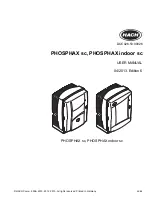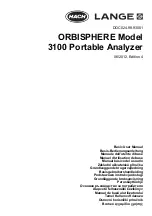
Installing the 40T
•
If the vault is inside a larger structure, its foundations are separated from the
pier, so that nearby vibrations are not transmitted to the sensor.
A high-quality seismic vault can be incorporated into the construction plans of a
new building at relatively low cost. However, if you are not in a position to build a
dedicated vault, you can still reduce noise to a satisfactory level by
•
installing below ground, in the basement or sub-basement of an existing
building;
•
placing the sensor directly on a cement floor to improve contact; and
•
locating the sensor in a quiet corner away from people and machinery (
e.g.
air
conditioning and heating systems, elevators,
etc.
)
Installation on higher floors is not recommended, especially for horizontal sensors,
since any “give” in the floor near the sensor will cause it to tilt slightly and register a
signal.
4.2.2
Temperature stability
The 40T can operate over a wide temperature range (–10 °C to +75 °C). However, the
sensor mass is sensitive to fluctuations in local temperature. This affects the
response of the instrument at long periods. Sunlight and other bright lights can also
cause small mechanical stresses that will be detected by the sensor. You can
minimise these effects by
•
installing in a basement, where the temperature is normally more stable than
above ground;
•
locating the sensor in a dark, protected corner, and
•
enclosing it in an insulated box (expanded polystyrene works very well). This
also helps protect the sensor from air currents.
19
Issue F - June 2019
















































